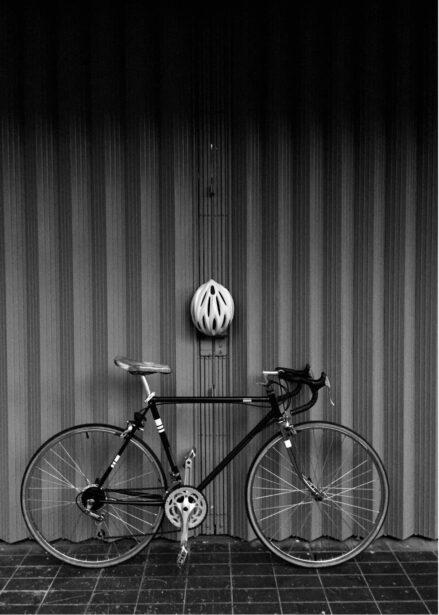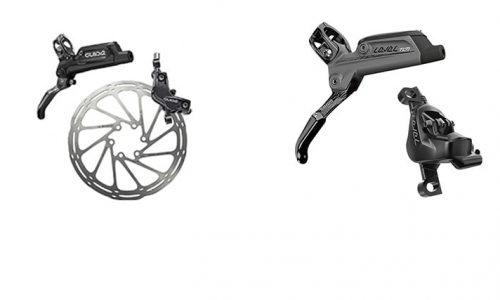Key Takeaway: Bar end and friction shifters, while less common in modern cycling, offer unique advantages: bar end shifters are cost-effective and aerodynamic, especially useful on time trial and triathlon bikes, while friction shifters eliminate the need for gear indexing and aren’t limited by cassette speed, making them ideal for budget builds and classic bikes.
Introduction
We live in a modern cycling world where we typically see companies make very similar gear to each other. We have seen this with shifters over the years, and typically now, we either have trigger shifters like on a mountain bike, or you have drop bar shifters, and it’s not often you see anything else.
It wasn’t always like this, and the market was full of different types of shifters. We had twist shifters, bar end shifters, butterfly shifters, friction shifters, downtube shifters, index shifters, and many more on classic bikes.
Two types that are still commonly used but are not often seen are bar end and friction shifters. In this article, we want to tell you all about them and why they are still being produced and used.
What are Bar End Shifters?
On classic bikes, bar end shifters are what you typically find situated at the end of drop bars. When I say the end, I mean where it loops right around and comes back on itself.
Years ago, these were very common and seen on many bikes, especially touring bikes. You will see these at the end of aero bars on time trial bikes and triathlon bikes on modern bikes.

The Advantages of Bar End Shifters
Price
Bar end shifters are not expensive. As far as it goes, they are actually outstanding value for money and typically can be a third of the cost of a standard drop bar shifter. This is mainly due to them not having a brake function.
Aerodynamics
Bar end shifters on the end of the aero bars means the rider can stay in the most aerodynamic position and also change gear. This makes the rider much more efficient, saves energy moving around, and keeps them in the low down fast position.
They can be turned into friction Shifters
Many bar end shifters have a fantastic quality and can be turned into friction shifters. Later in this article, we are going to tell you a little bit about friction shifters.
Disadvantages of Bar End Shifters
Away from the Brakes
Wherever you situate bar end shifters, they are typically nowhere near your brakes. If you need to emergency stop and you are changing gear, you need a second or two to return to the brakes, and sometimes that is the difference between a hit and a miss.
Harder to install
To install bar end shifters can be complicated as many need to be internally routed through the bars, and If you don’t internally route them on classic bikes, they can be a bit of a nuisance and look awful.
Cannot be used in a Standing Climb
Gears like trigger shifters and drop bar shifters you can use while on a climb. When it comes to bar end shifters, you can’t unless you sit down.
Should you use Bar End Shifters on your bike?
If you’re using a time trial or triathlon bike, they are vital to maintaining maximum speed and efficiency.
If you’re on a road bike or anything else, I personally would avoid them for safety reasons as you have to come away from the brakes.
What are Friction Shifters?

Friction shifters are unlike any other gearing on the market and work in a very unique way that used to be the norm.
Typically standard modern day gearing is indexed, so when you shift up or down, it will click into place as the chain goes across the cassette.
With a friction shifter, it doesn’t. You have complete control over where exactly you want the chain to move to, and there’s no indexing.
These will commonly be situated on the downtube, and you will have one shifter for the front derailleur and one for the rear derailleur.
Advantages of Friction Shifters
Your gears don’t need indexing
With friction shifters, you don’t need to index your gearing. You literally just feather the shifter until it is perfectly in place and then carry on pedaling.
It isn’t limited to a certain speed cassette
Providing the shifter and the derailleur have the range and the chain is compatible, you’re not limited to a certain speed cassette and can just shift up and down as you please.
Very Cheap and Reliable
Friction shifters are very cheap and easy to source. They are great for budget bike builds and very easy to use.
Disadvantages of Friction Shifters
You need to get it right
If you’re using a friction shifter and the gear is not in correctly, it has a chance to slip, and this means your pedal goes with it. They take time to get used to, and you need to listen carefully to ensure the chain is aligned correctly.
Take longer to use
With indexed gears, you can just click and go, friction shifters do take longer to find the gear, and this can waste valuable time if you are racing or in a rush to get up a hill.
They’re pretty old technology
Friction shifters are pretty old technology now, and finding these for modern groupsets is difficult. Indexed gears are typically much better and more efficient.
Hands off Brakes
Most friction shifters are not situated near the brakes, and it means you will need more time to respond if you need to brake fast.
Should I use friction Shifters on my bike?
If you love classic bikes and are not in a rush to get anywhere, they are entertaining to use and effortless to maintain. If you plan on anything competitive, then I wouldn’t recommend them.

Conclusion
Although bar end shifters and friction shifters are still used, they are slowly becoming less popular as modern technology is so good, and they are slowly becoming obsolete.
You will see them on bikes, and they are very cool, but unless you time trailing or riding a classic, you probably won’t use them in your cycling.

Robbie Ferri has spent years working in a bike shop, has worked with industry leading brands on product creation, has been a semi pro athlete, and is a fully qualified strength and conditioning coach. He has broken World Records, bikepacked all over the World and raced ultra distance at a top-level.



I use Campy SR (2015 Supper Six Evo) for my long distance bike the standard brake-shifters
I use Dura-Ace (1999 Ultimate) for my errand bike the standard brake-shifters
But for daily commuting to work, I ride a 2011 Pinarello Paris equipped with Dura-Ace 9000 (DA C-24 wheels) with end shifters. If I am in high gear when the light turns red, I need to pop into first gear in 1 second so I can explode off the green light and establish myself on the other side of the intersection before cars pass me.
Thus, end shifters are safer for commutes in rush hour traffic!